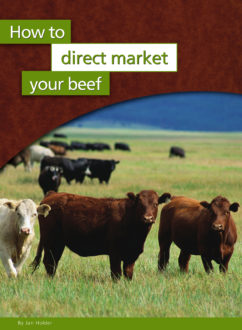
You may hear mention of beef “fitting in the box.” That means your carcass is generally suited for mass-marketed beef, but it’s hard to know what they want.
Each segment of the industry makes its money differently. The calf people make their money off cows that cycle back quickly. The stocker people make their money off fast growth on grass. The feedlot people make their money keeping their lot full. The packers make their money by slaughtering as many animals as they can.
So where does tenderness or marbling come into play? It usually doesn’t mean too much if you’re selling commodity beef. However, there are some exceptions. Bill Niman (right), founder of Niman Ranch, built a reputation for quality. For the rest of us, until the industry vertically integrates, there won’t be much additional profit in creating a better product for the commodity markets.
With all that in mind, you can see that most of those cogs in the wheels of big industry don’t apply to you. You will have to be your own research agent. There are a lot of folks like you out there doing different things. You will want to network with them and compare results.
What kind of cattle are the best for a grass-fed niche in Alabama? What is the point of diminishing returns with a grain-on-grass pro-gram in Utah? If you are lucky, you may find some research, but it’s been our experience never to believe anything until you try it yourself.
There is a lot more good information out there than when we started. Most of the organizations and information listed in Resources (p. 88) are pretty new. With any luck and a lot of planning, you won’t make all the mistakes we made. Despite the trials we went through, we are very happy with our choice to direct market our beef. We think you will be, too.
